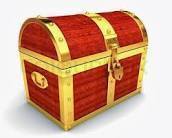Madagascar

Here is the complete financial historical report of Madagasikara (Madagascar) in International English, as requested:
Financial Historical Report of Madagasikara (Madagascar)
Basic Data
-
Country ISO Code: MG
-
Official Language: Malagasy (Malagasy) and French (also official)
-
Language ISO Code: mg (Malagasy)
-
Current Official Currency: Malagasy Ariary
-
Currency ISO Code: MGA
Currency History in Madagascar
1. Malagasy Franc (MGF)
-
The Malagasy franc was the official currency during French colonial rule and continued after independence in 1960.
-
The franc experienced devaluation and economic instability over the decades.
-
Coins and banknotes denominated in francs circulated from 1925 until 2004.
2. Ariary (since 1961)
-
The ariary was introduced in 1961 and initially circulated alongside the franc.
-
The ariary is a non-decimal currency: 1 ariary equals 5 iraimbilanja (fractional unit).
-
From January 1, 2005, the ariary became the sole official currency, replacing the franc.
-
The iraimbilanja coins have become largely obsolete due to inflation and low value.
Details of the Current Currency – Malagasy Ariary (MGA)
| Attribute | Description |
|---|---|
| ISO Code | MGA |
| Singular Name | ariary |
| Plural Name | ariary |
| Subdivision | 1 ariary = 5 iraimbilanja |
| Fraction Singular | iraimbilanja |
| Fraction Plural | iraimbilanja |
| Initial Production | 1961 |
| Initial Circulation | 1961 |
| Mint | Various international mints, including France |
| Issuing Authority | Central Bank of Madagascar (Banky Foiben’i Madagasikara) |
| Coin Denominations | 1, 2, 4, 5, 10, 20, 50 iraimbilanja; 1, 2, 4 ariary |
| Banknote Denominations | 100, 200, 500, 1,000, 2,000, 5,000, 10,000, 20,000, 50,000 ariary |
Designs and Symbols on Coins and Banknotes
-
The currency features cultural and natural symbols of Madagascar such as lemurs, baobab trees, and native flora and fauna.
-
Banknotes depict historical leaders, national monuments, and traditional Malagasy life scenes.
-
Texts are in Malagasy and French, reflecting the country’s bilingual status.
Economic and Historical Context
-
The transition from the franc to the ariary was part of a monetary reform aimed at reinforcing national identity and stabilizing the economy.
-
Madagascar’s economy faces structural challenges including widespread poverty, agricultural dependence, and vulnerability to external shocks.
-
The ariary’s non-decimal structure is rare globally and reflects Madagascar’s unique cultural heritage.
-
The Central Bank of Madagascar manages currency issuance and monetary policy to maintain stability.
Interesting Facts and Particularities
-
The ariary is one of the few non-decimal currencies worldwide, divided into 5 iraimbilanja instead of 100 subunits.
-
Iraimbilanja coins are rarely used in daily transactions due to inflation and low purchasing power.
-
Madagascar issues commemorative coins celebrating cultural and historical events.
Current Circulation Status
-
Since 2005, the ariary is Madagascar’s sole official currency.
-
Iraimbilanja coins remain legal tender but are mostly symbolic in everyday commerce.
-
The Central Bank regularly issues new series of banknotes and coins with updated security features to prevent counterfeiting.
This report provides a comprehensive overview of Madagasikara’s financial history, highlighting the evolution of its currency and the unique features of the current official currency, the Malagasy ariary.
 Nilton Romani
Nilton Romani
